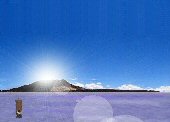Further examples of differing land formations are given on the page called geoforms while this page attempts to recognise and give examples of the differing agricultural systems which flourished in the pre-Columbian past.
We can try and categorise these according to the following examples.
1. The mountain terraces for which the Andes are famous.
2. Mountain terraces with contour based canals.
3. Low level undulating landscapes with contour based canals.
4. Maze-like parcels of raised land surrounded by irregular water channels called "suka kollus".
5. Regular plots of land bounded by parallel straight canals
6 hilltops surrounded by concentric irrigation channels.
7. Modified mountains with artificial radiating walls or embankments sometimes called "geoglpyphs".
8. The "geoglyph" type of agriculture with long narrow embankments accompanied by circular heaps of stones.
9. Small, regular square stone walled encloseures.
10 Circular enclosures.
11. Rectangular plots.
12. Square plots plots.
13. Irregular stone walled enclosures.
14. Artificial ponds with interconnecting water channels.
15. Canals bringing water to flood salt pans.
16. Artificial environment within salt pans flooded areas.
Some of the old patterns have been eliminated by later cultivations but many can be still detected on
the satellite imagery, which also shows up extensive earthquake damage in places where old terraces have been
virtually demolished and in others where ancient hilltops with circular channels have been destroyed.
1. The mountain terraces for which the Andes are famous.
Additional agricultural systems in other parts of South America.
See also additional studies,
atlantis canals on the Altiplano
canals gallery
Chipaya canals gallery
canals in Peru
Caral, Peru containment canal
Atlantis stade - Egyptian and Sumerian cubits
Tiwanaku cubits
Peru cubits and calendar
cubits between altiplano canals
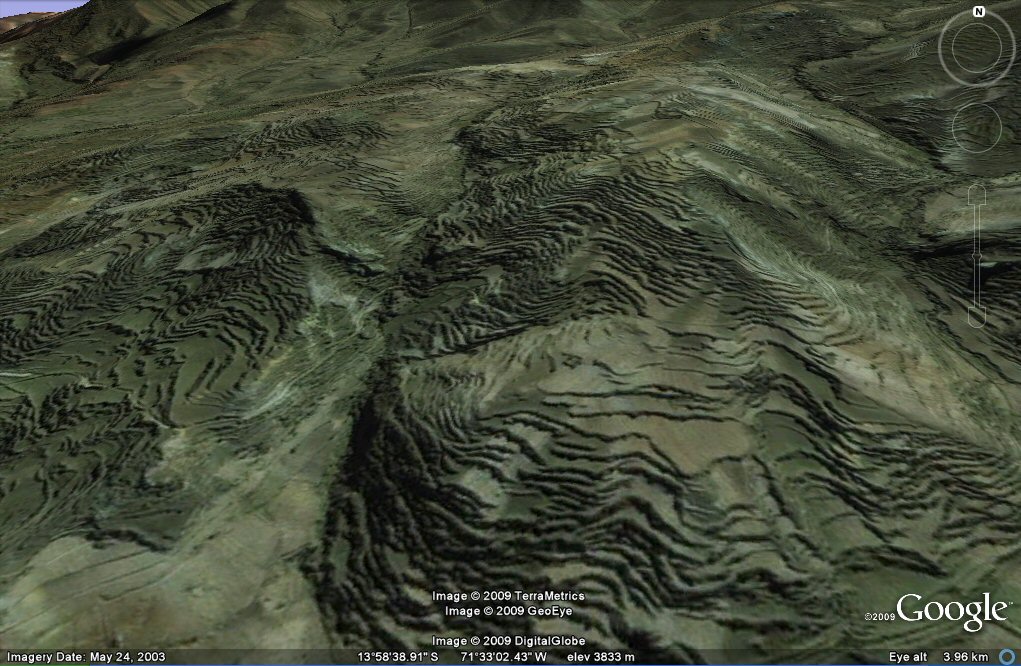
Above, oblique view of terracing in the Cusco region.
2. Mountain terraces with contour based canals.
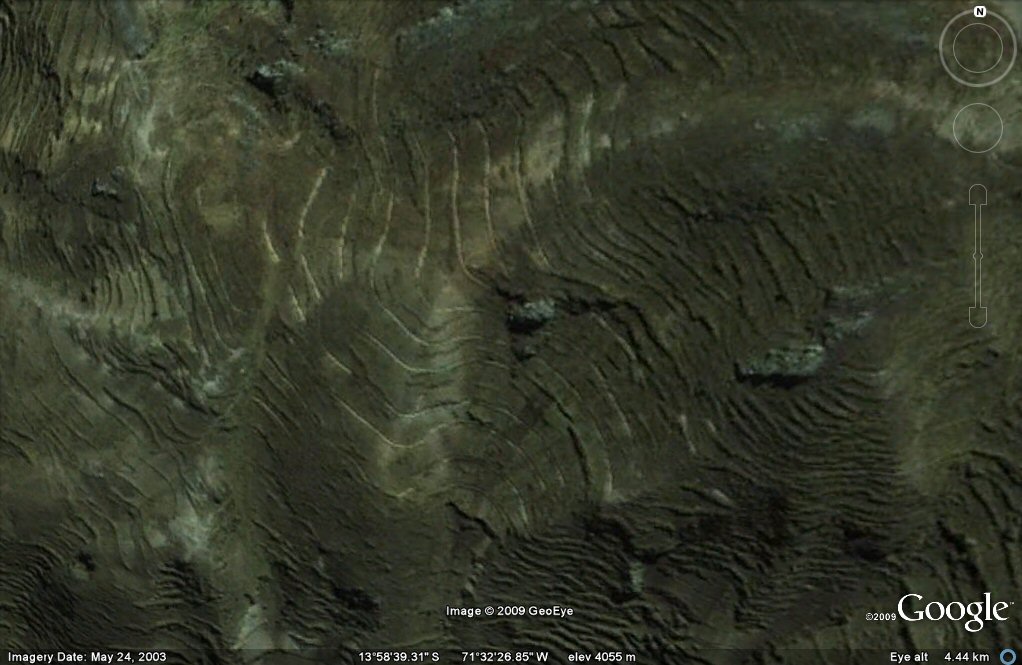
Above, view of irrigation channels following the contours on the mountain terraces, Cusco region.
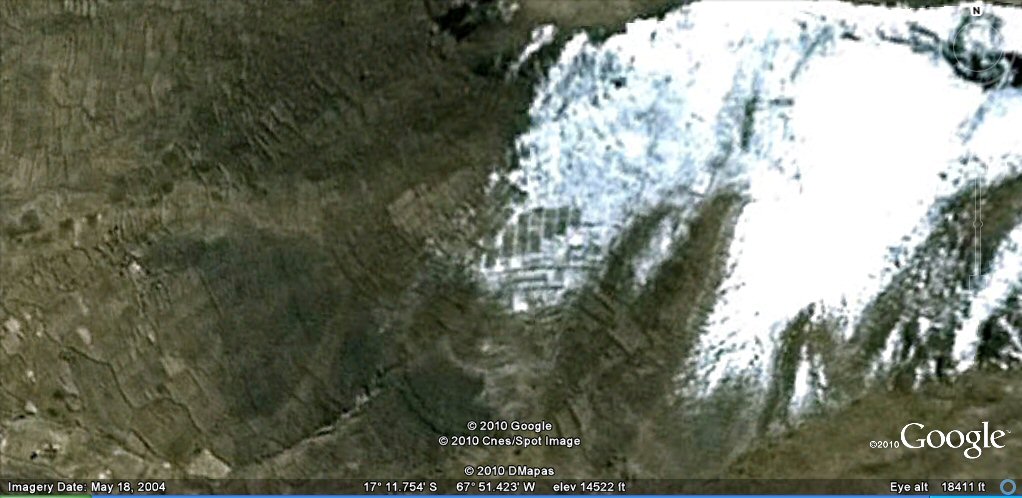
Above, these terraces/plots in the Oruro region are at an altitude of 14,500 feet...
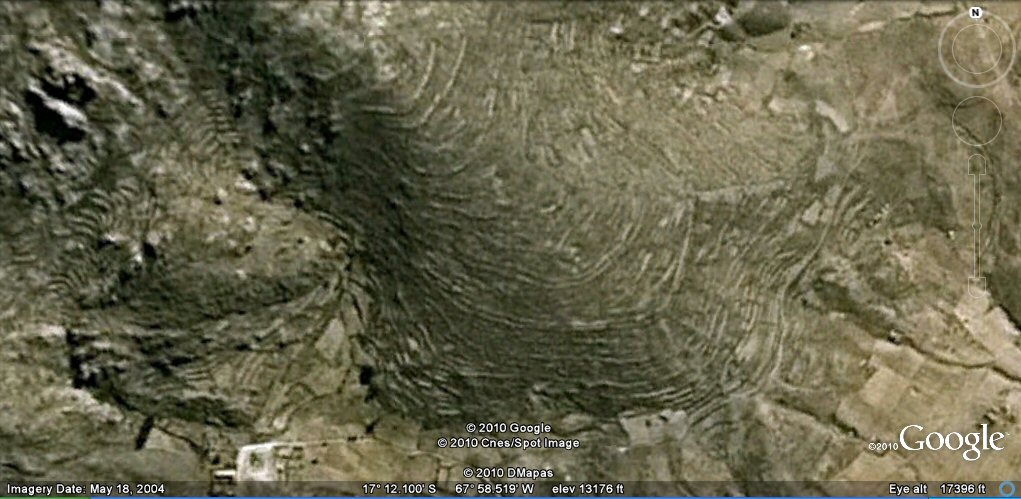
Above, Terraces/canals in the Oruro region
3. Low level undulating landscapes with contour based canals.

At first I thought Google Earth had somehow included
a piece of contour mapping into their imagery by mistake - until I realised that these are the remains of
a sophisticated system of contour-based irrigation channels.
See Contours Peru page
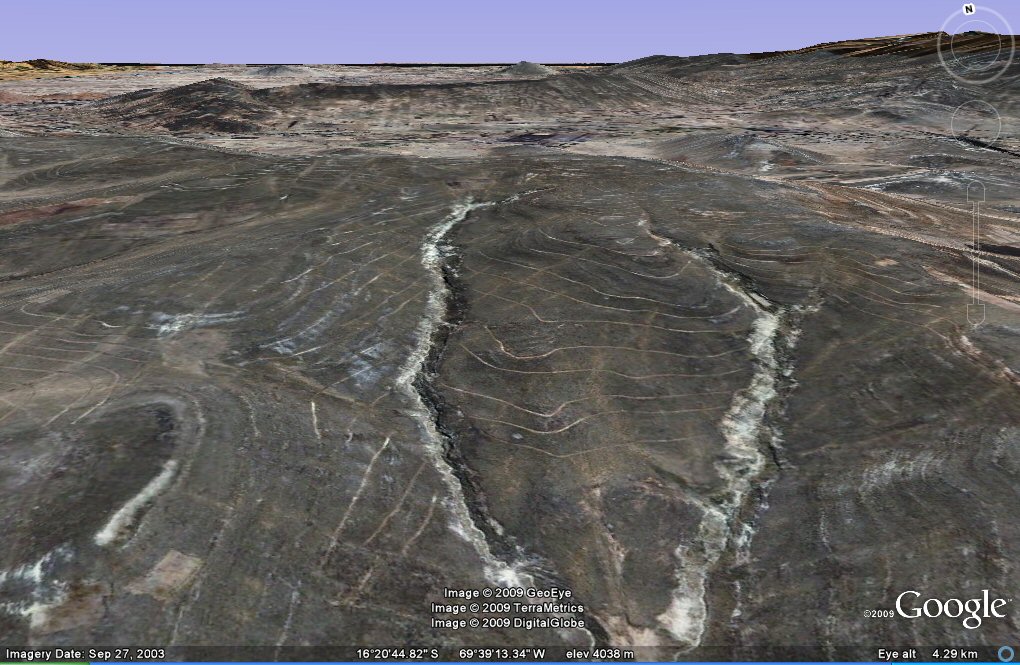
oblique view of contoured channels cutting into the landscape
4. Maze-like parcels of raised land surrounded by irregular water channels called "suka kollus".
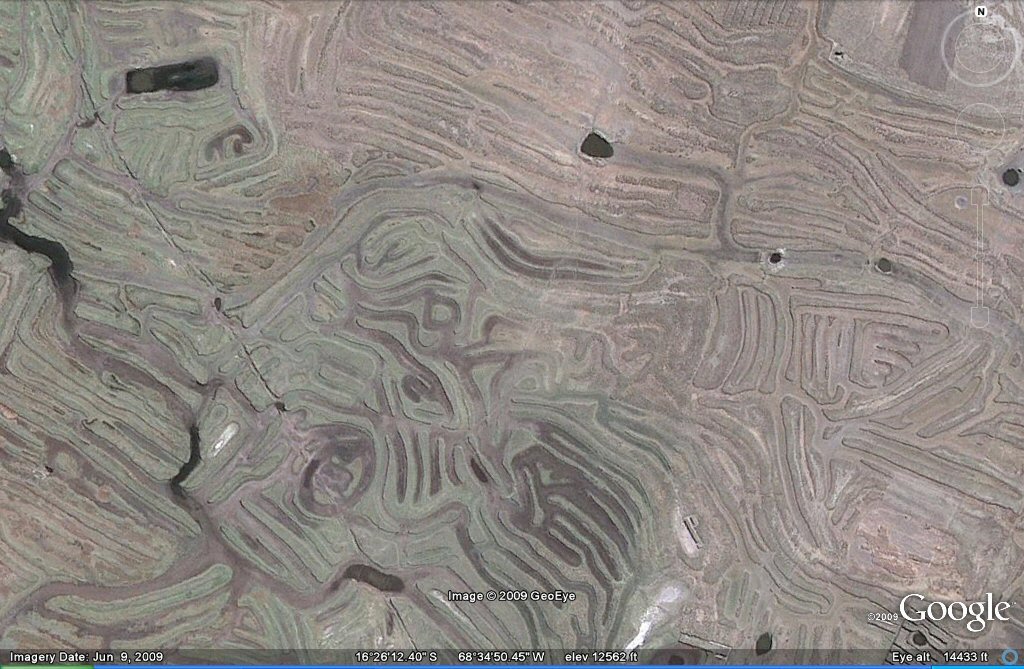
Above, an example of the "sukakollus", irregular raised fields surrounded by water channels, now disused.
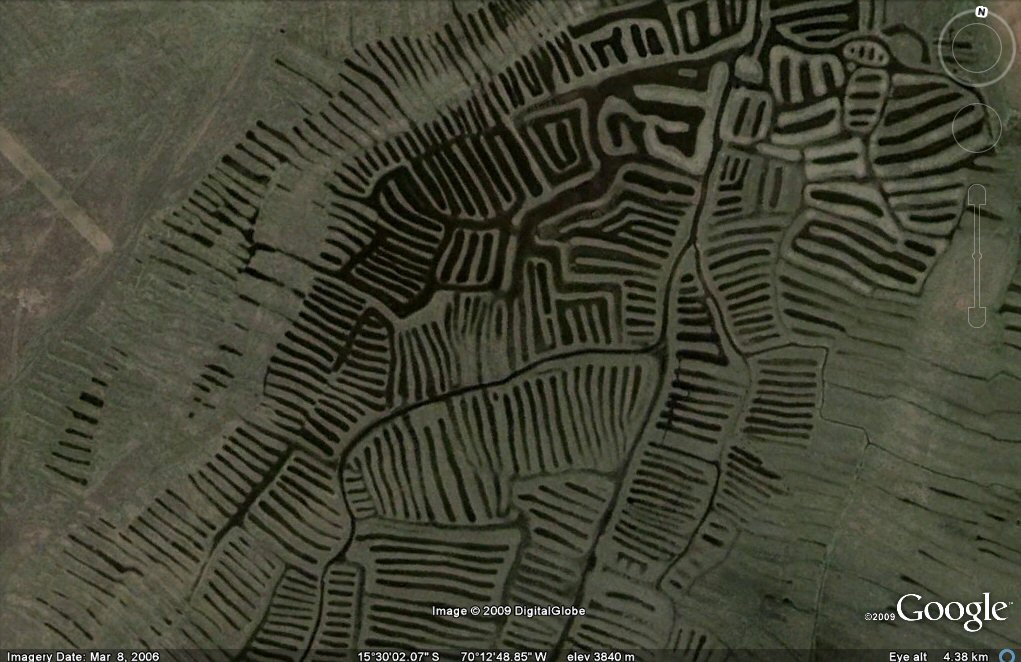
Above, suka kollus in region just north of Lake Titicaca.

Above, an example of the "suka kollus", raised fields surrounded by water channels.
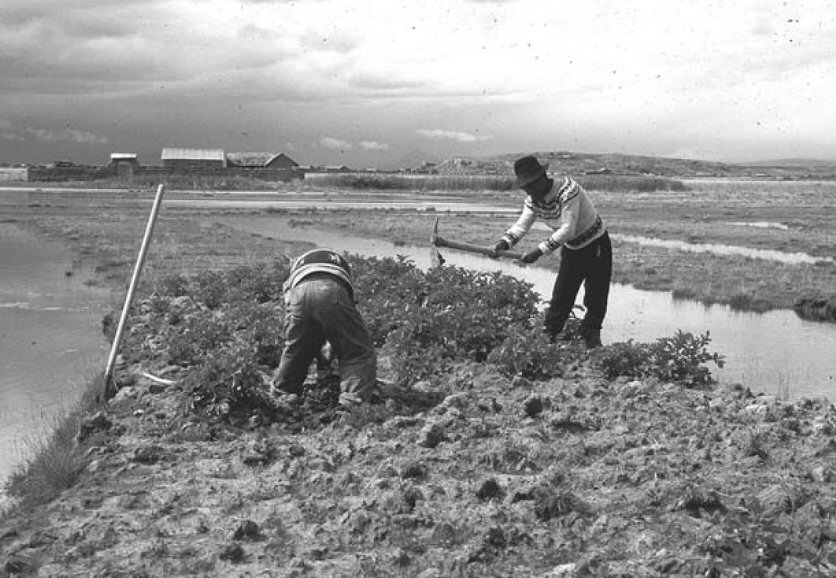
Above, suka kollus. Where some of the old sukka kollus were revived by prof
Alan Kolata and
Oswaldo Rivera, production of crops was greatly increased due to the influence of the water channels raising
the local temperature also preventing destruction by frost.
5. Regular plots of land bounded by parallel straight canals
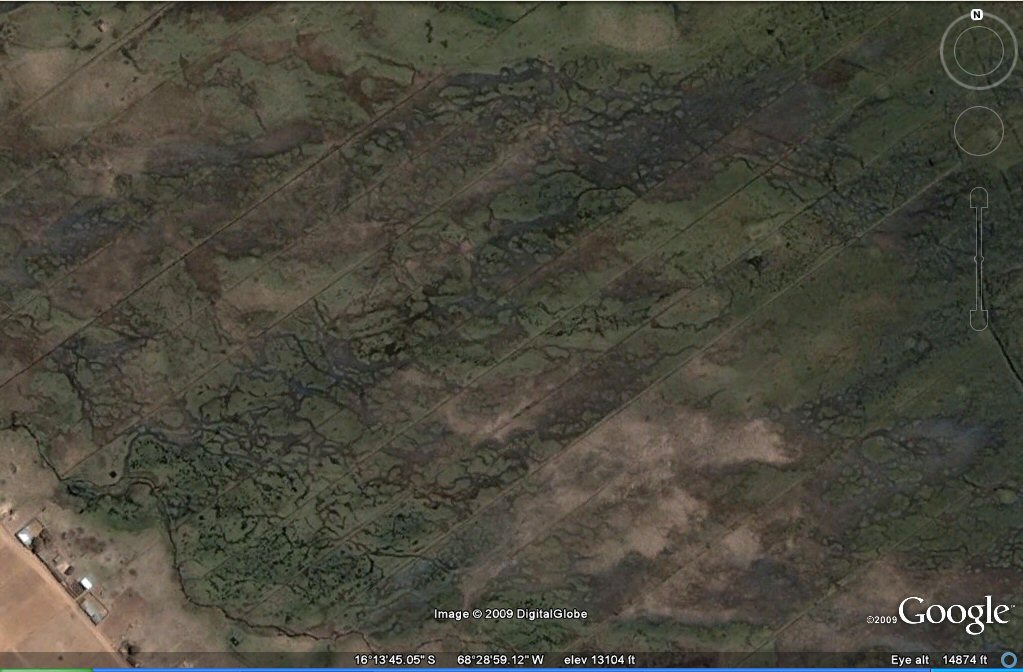
Above, close-spaced parallel canals, now disused.
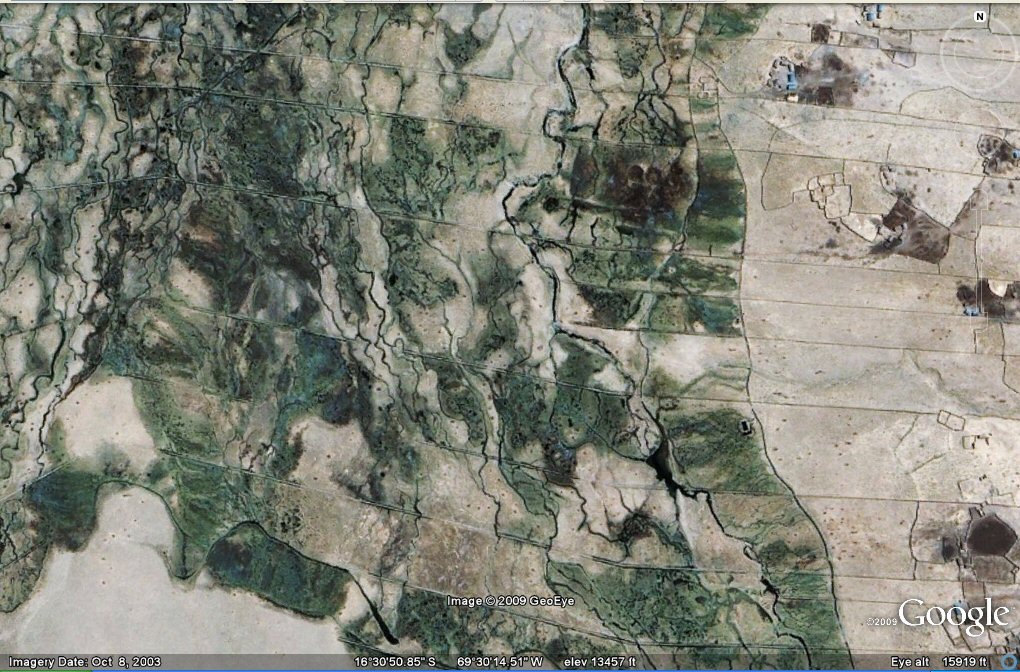
Above, some parallel canals, now disused, in the region south-west of Lake Titicaca.
See Canals Peru page
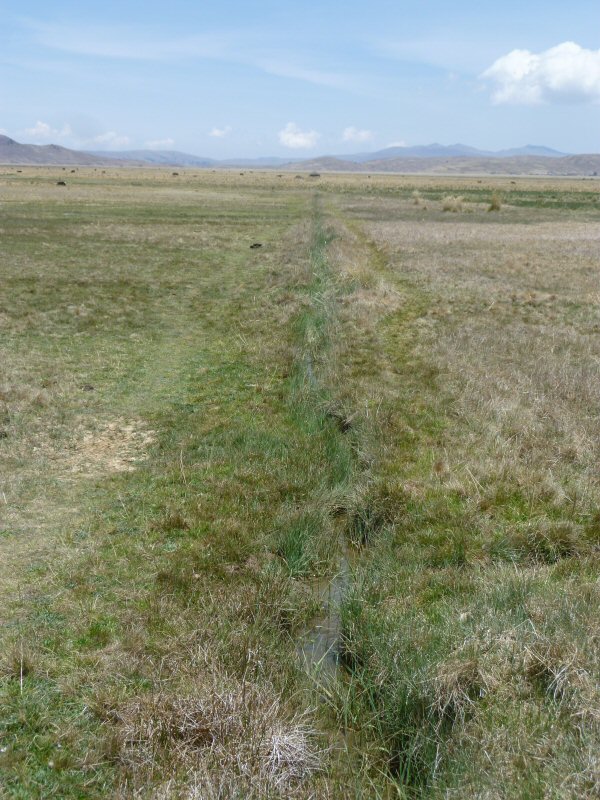
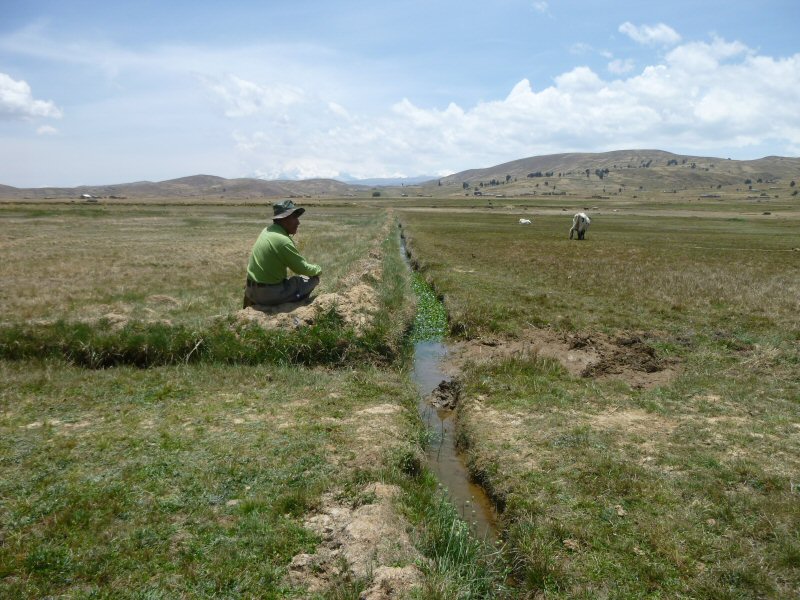
Above, left, disused canal and right, canals reused today by the local people.
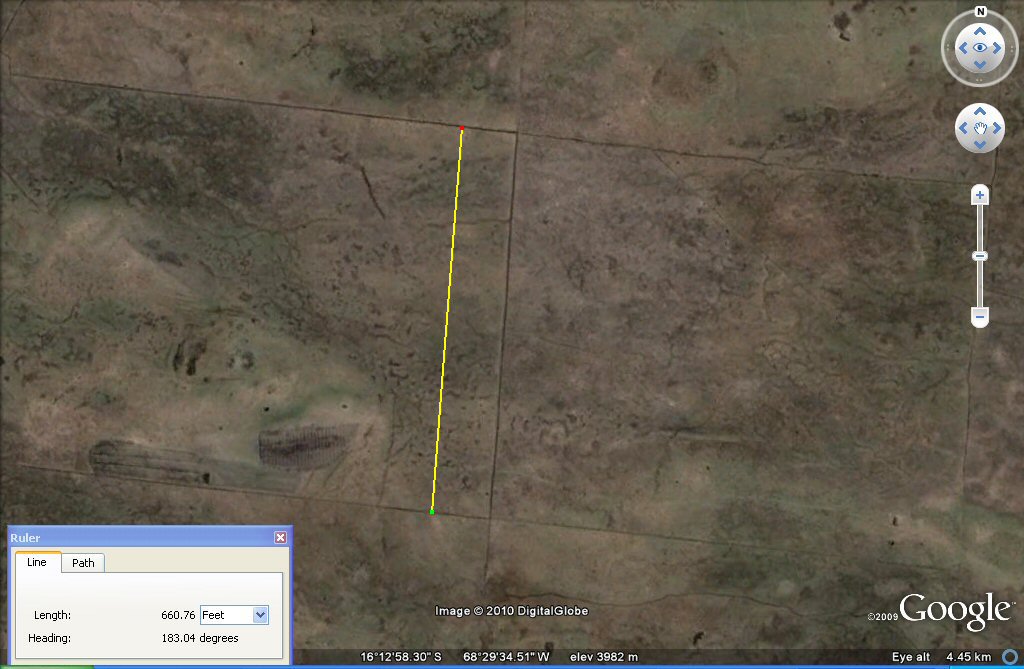
Above, the two horizontal parallel canals are 1 x furlong or 660 feet or about 200 metres apart
and they form plots of 200 x 250 metres
or 400 x 500 Sumerian cubits. Dating is important to establish which unit of measurement was originally used, see below.
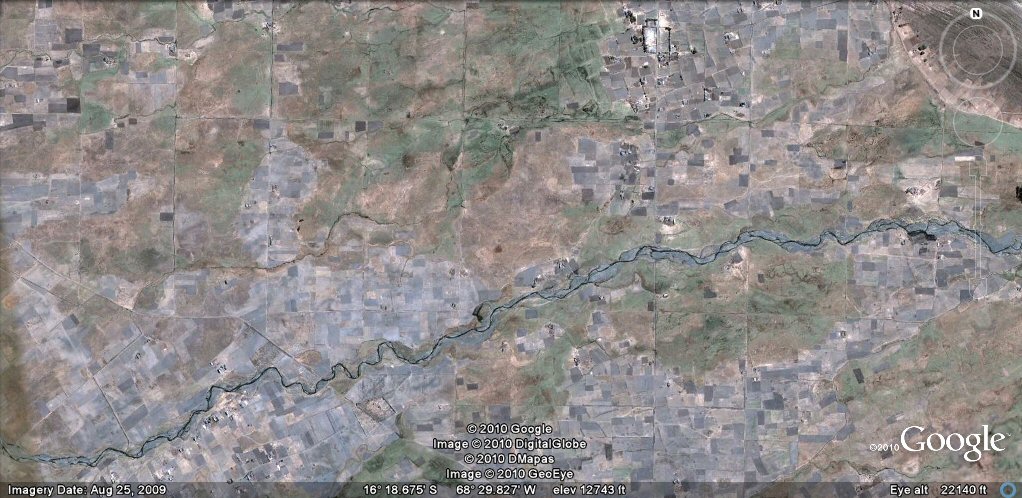
Above, an underlaying system of canals forms a chequerboard pattern with squares of 600 sumerian cubits or
300 metres.

Above, the underlaying canals form blocks of 600 Sumerian cubits or 300 metres. It can be seen on this photo where older canals have been redug in modern times.
The metre was adopted by the French academy of Sciences
for universal use in 1793, so if these canals are more recent than 1793, or are modern, they could have been
set out in metres, however if they are pre-Columbian then they are probably set out in "Sumerian" cubits of 19.8" whilst if they date from after
the time of the Spanish Conquest they could still be in "Sumerian" units such as cubits and furlongs since these were also brought over by
the Spanish as the old Spanish vara was in fact the "Sumerian" yard of 33.0". Each block is 600 Sumerian cubits or 360 Sumerian yards square.
6 hilltops surrounded by concentric irrigation channels.

Above, close-up oblique view ringed hilltop near Viacha, La Paz zone.
7. Modified mountains with artificial radiating walls or embankments sometimes called "geoglyphs".
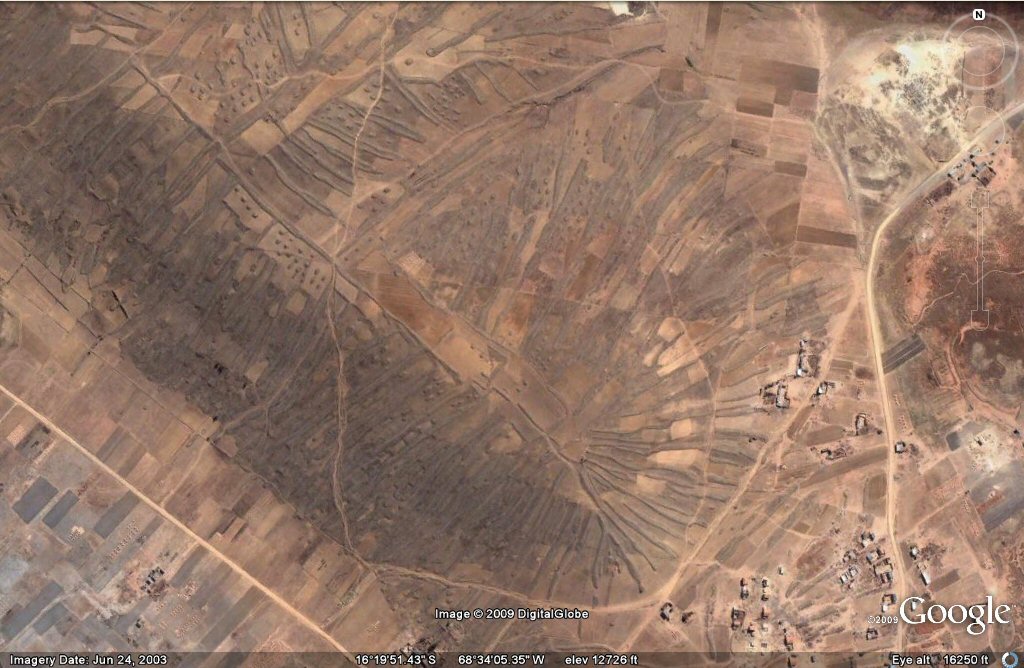
Above, land forms north of Tiwanaku called "geoglyphs" by David Flynn. The geoglyphs are long columns of stones originally cleared from the fields to form "vertical terracing" and often accompanied by small mounds of stones.
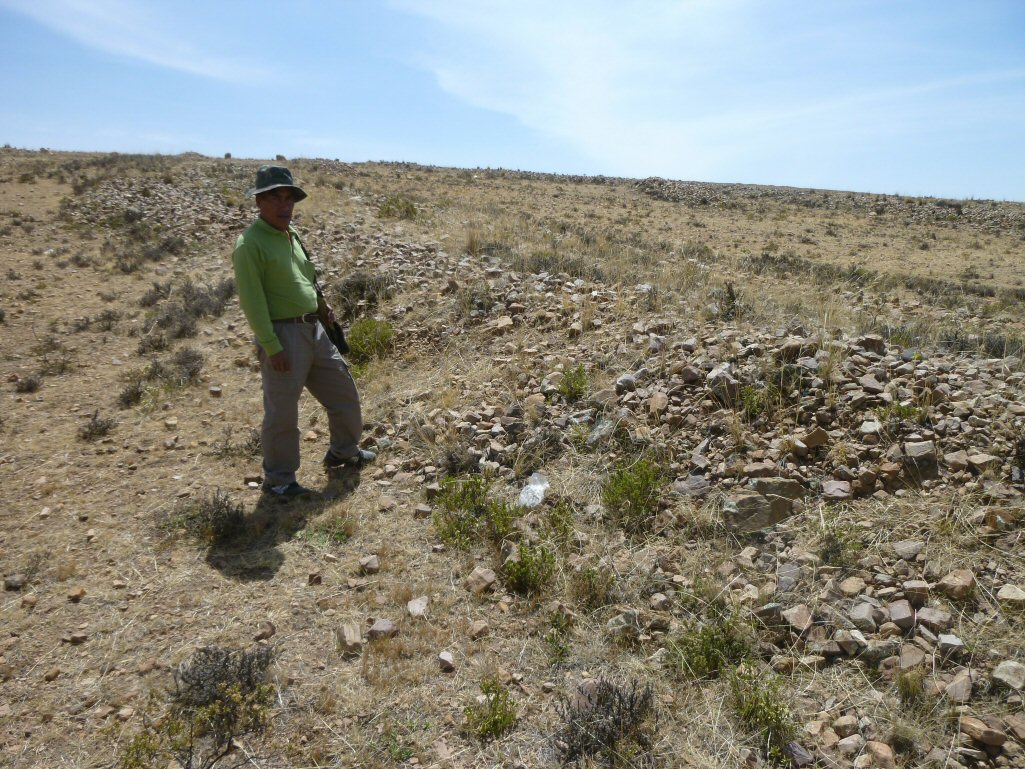
Above, Porfirio Limachi besides one of the columns of stones.
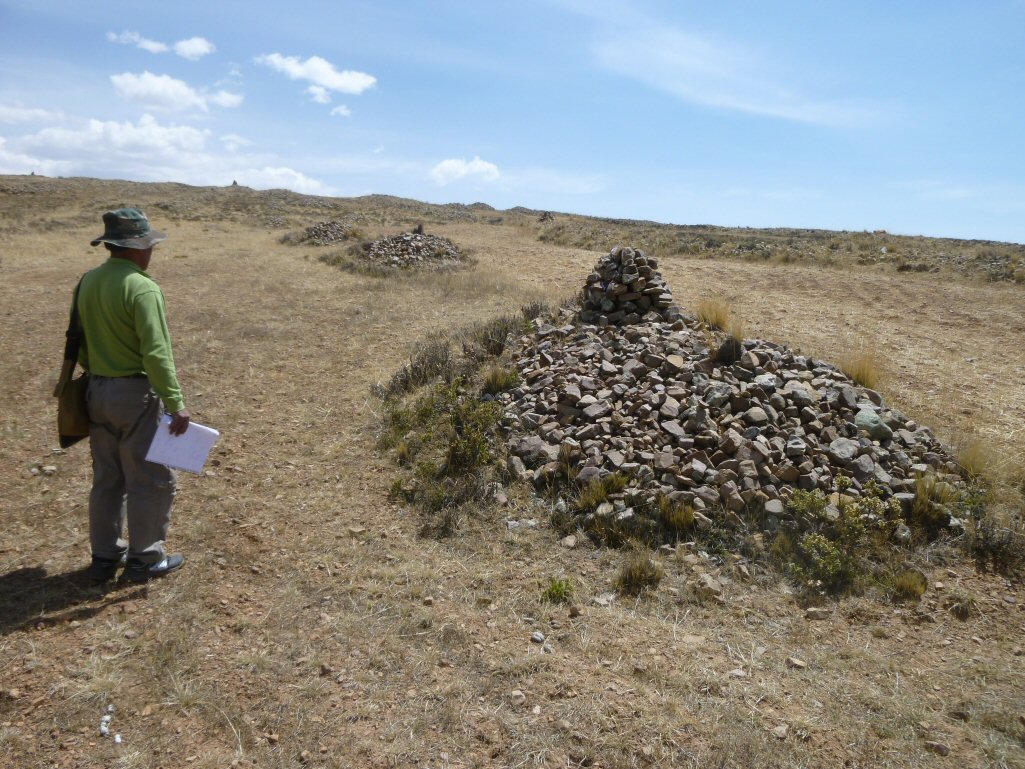
Above, Porfirio Limachi besides one of the mounds of stones.
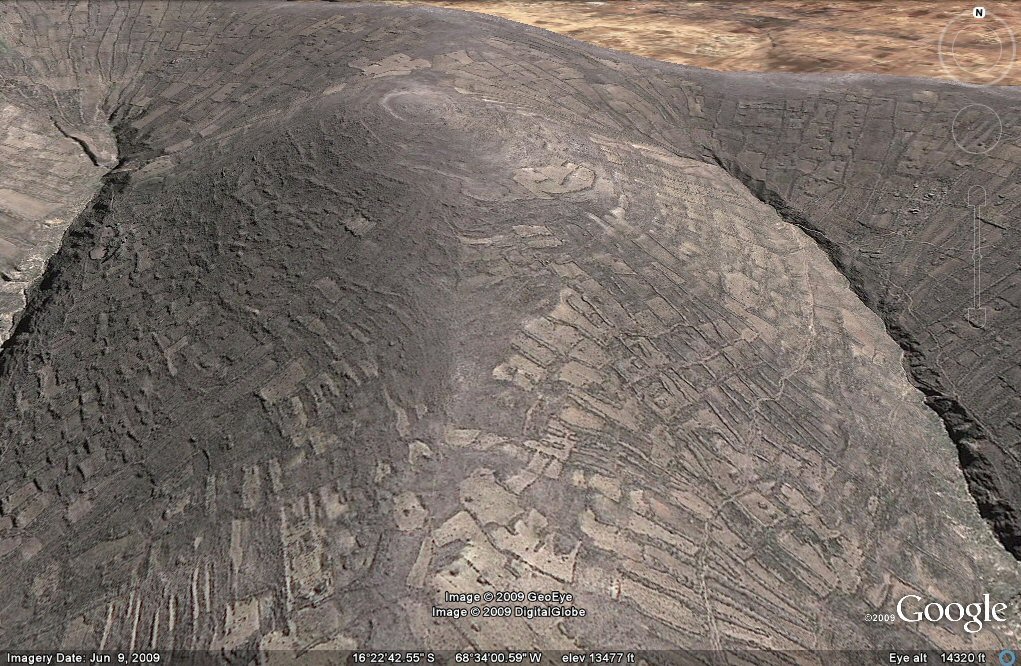
Above, the "geoglyphs" appear to be a fossilised form of prehistoric agriculture.
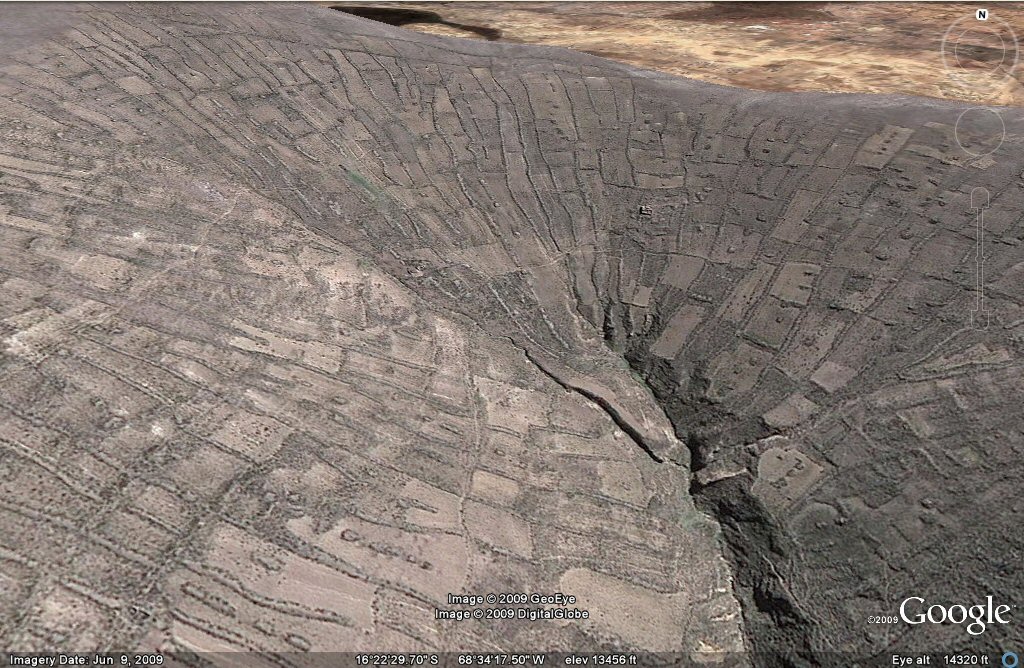
Above, close-up oblique view.
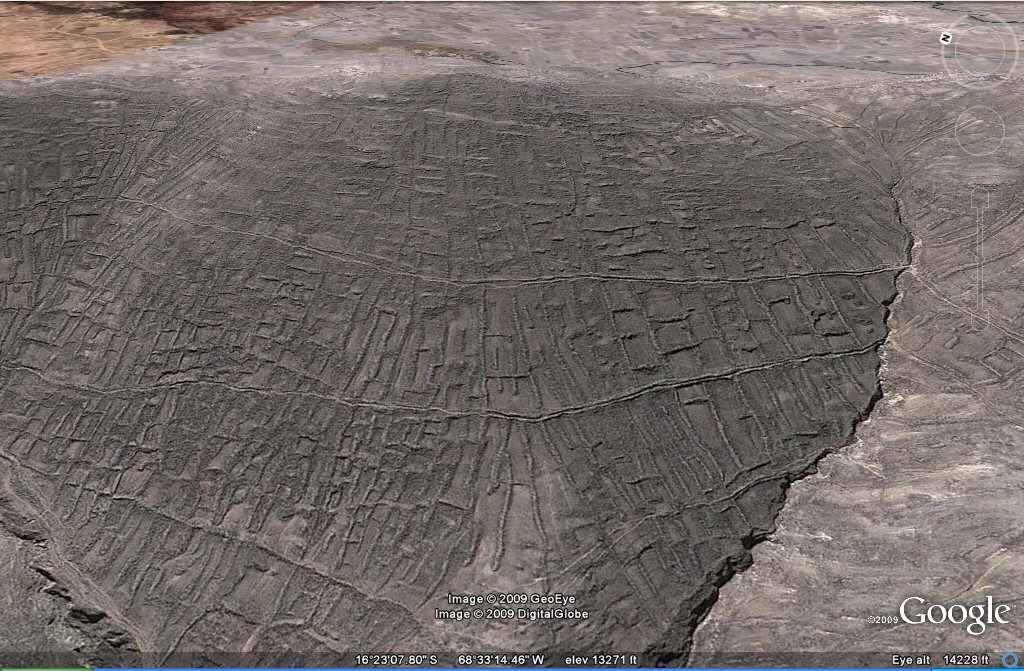
Above, close-up oblique view shows stream feeding irrigation channels.
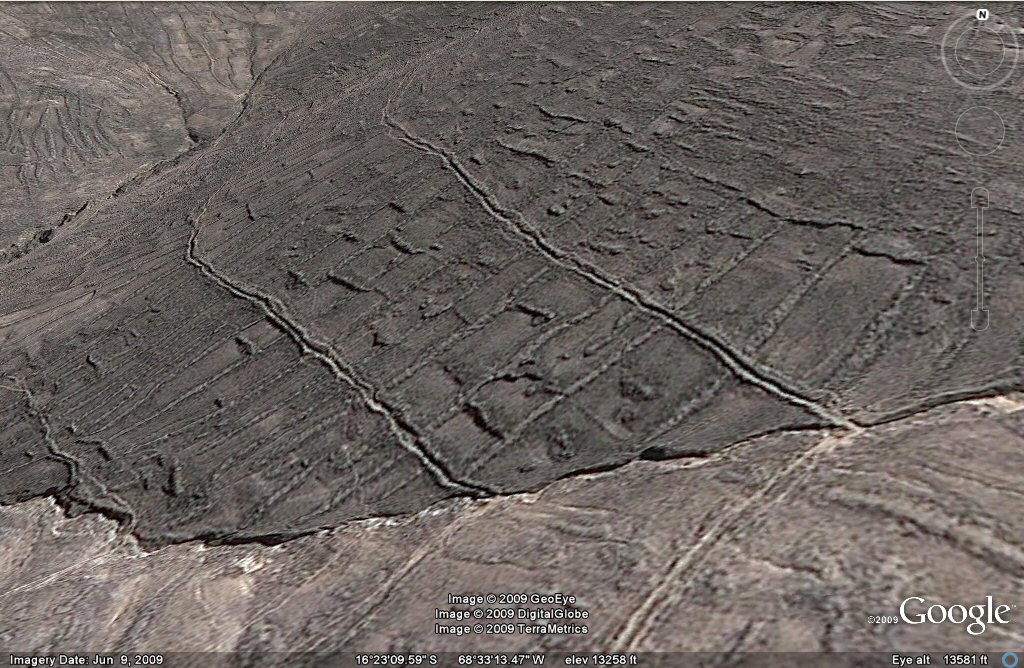
Above, close-up oblique view shows stream feeding irrigation channels.
8. The "geoglyph" type of agriculture with long narrow embankments accompanied by circular heaps of stones.
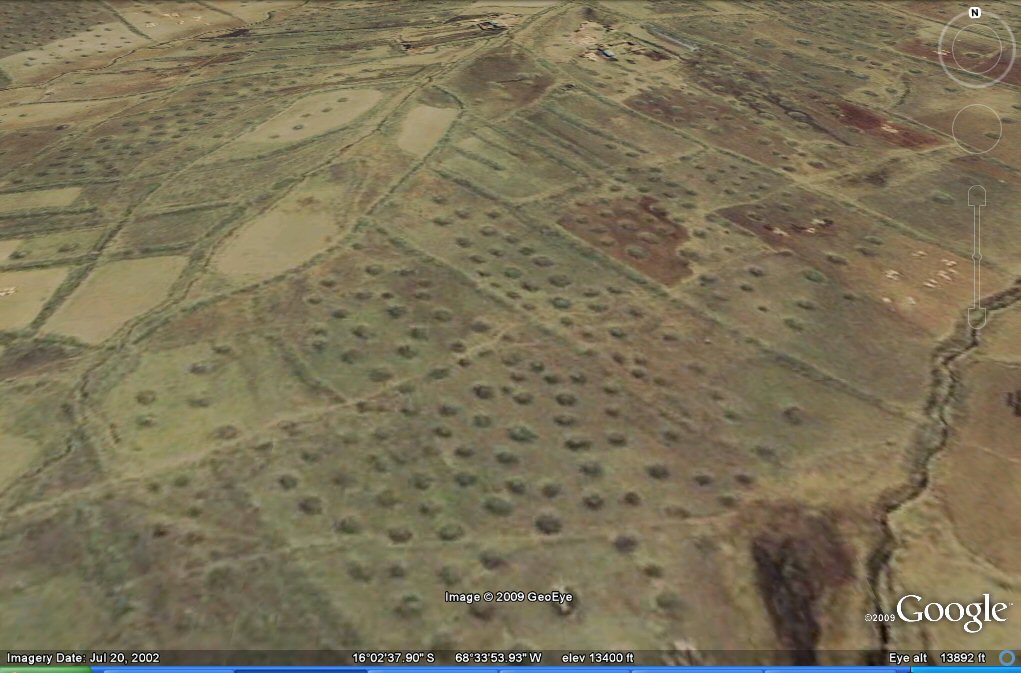
close-up of more "geoglyphs" or landforms in the same zone south-east of Lake Titicaca.
9. Small regular square stone walled enclosures.
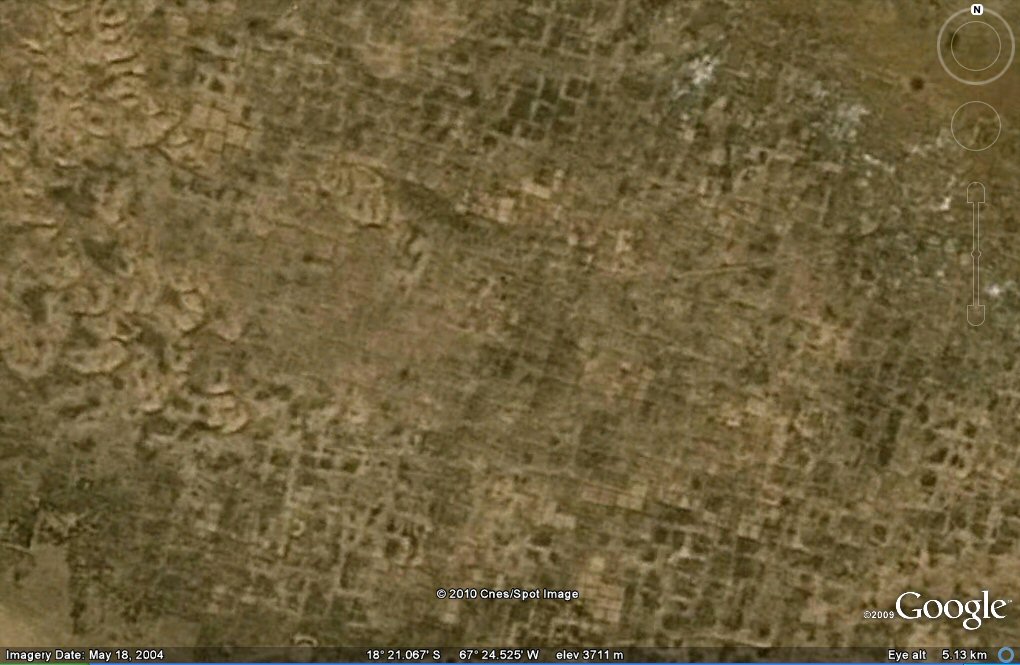
Above, square plots north-west of Lake Poopo.
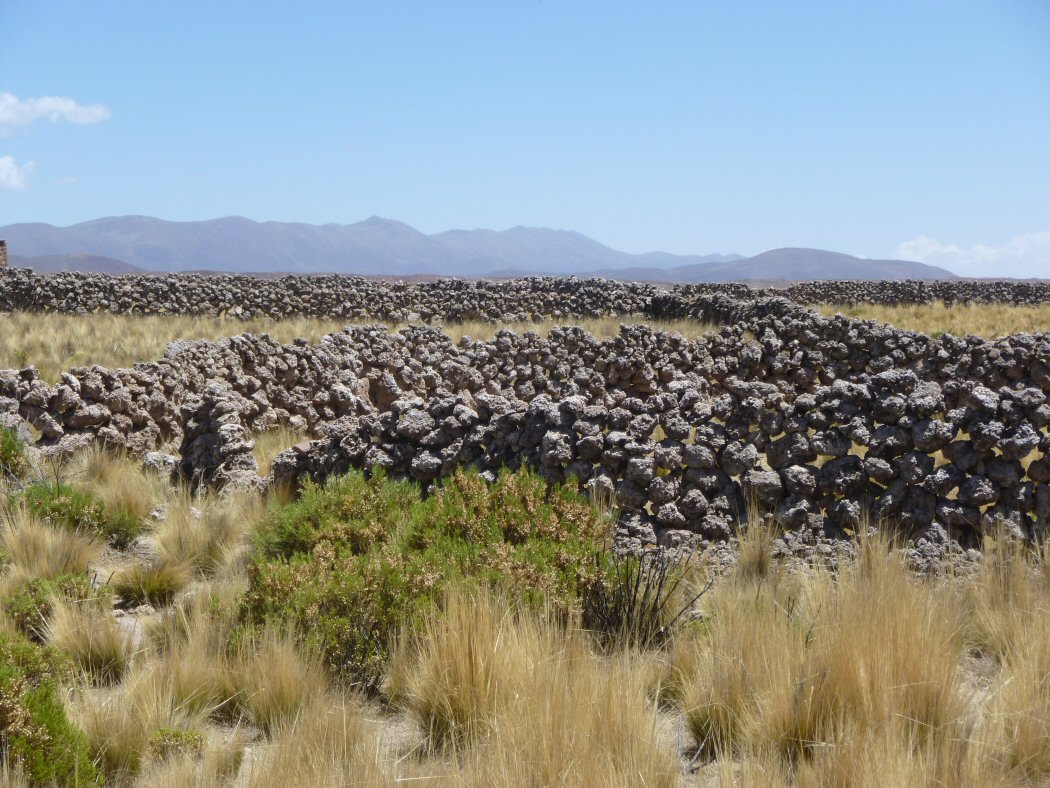
Above, the plots are enclosed by walls.
10 Circular enclosures.
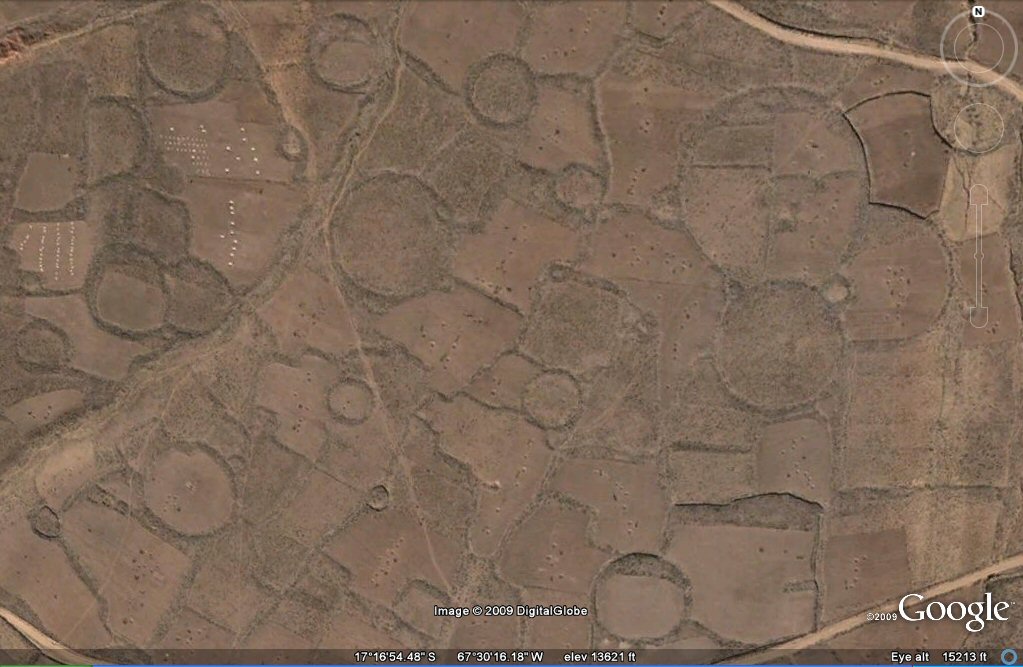
Above, circular enclosures north of Oruro.
Above, remains of circular walled enclosure.
11. Rectangular plots.
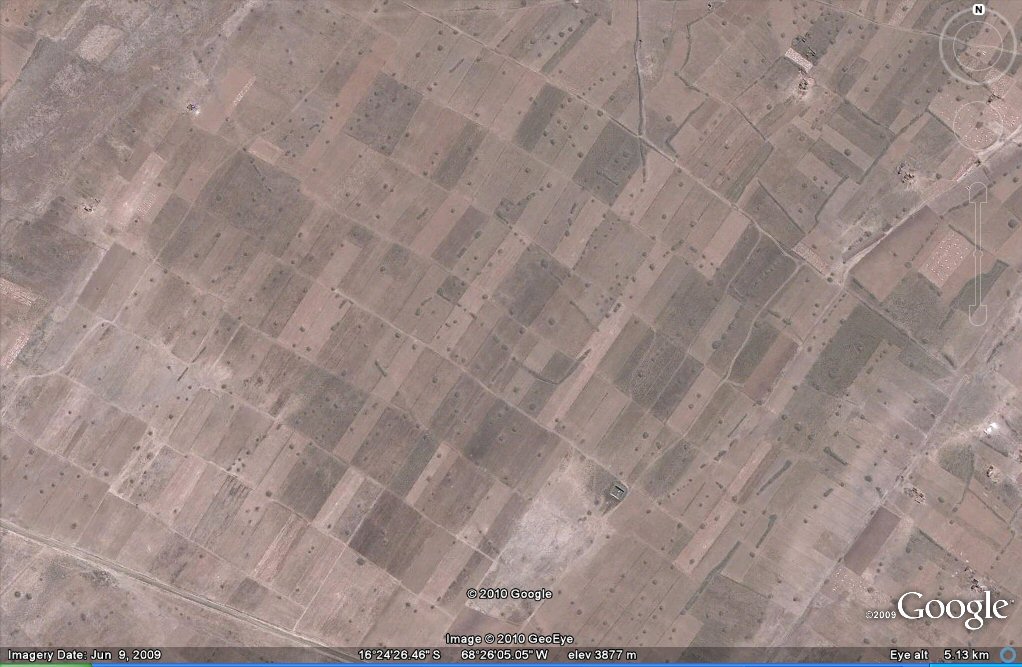
Above, regular, measured plots.
12. square plots.
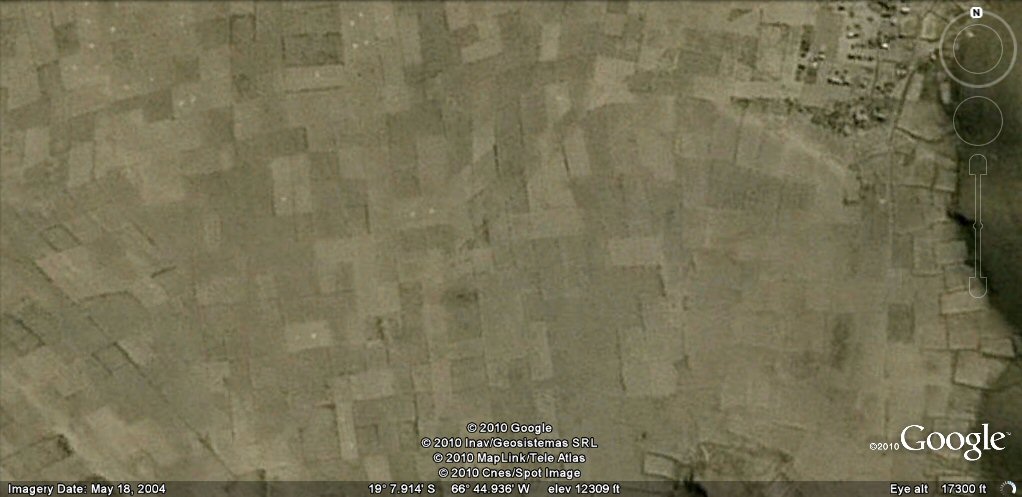
Above, regular, square plots.
13. Irregular enclosures.
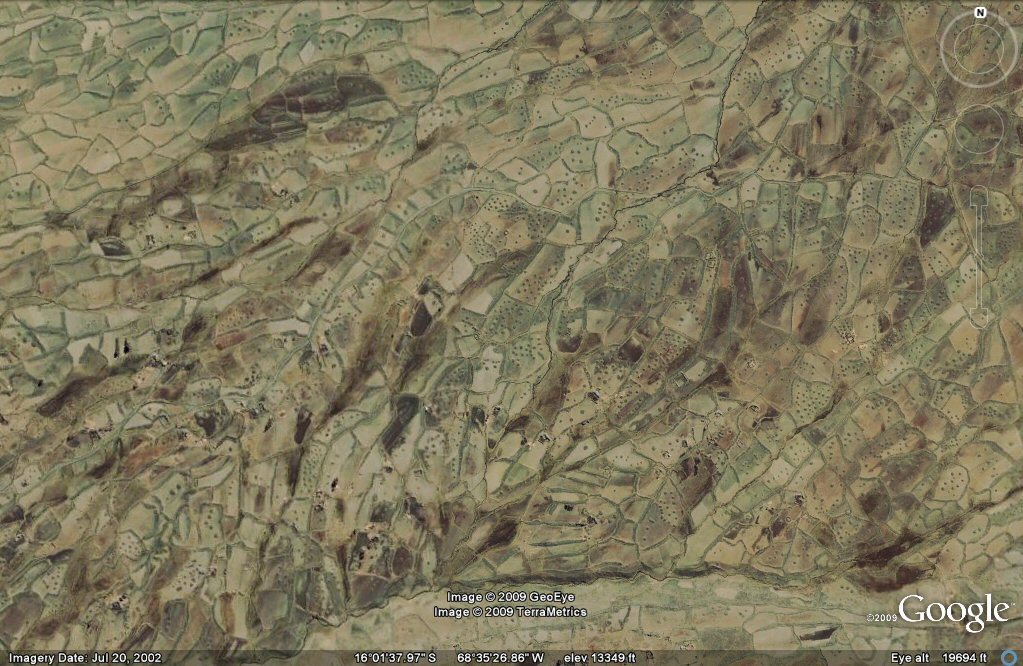
Above, in the same zone south-east of Lake Titicaca,
some irregular field boundaries.
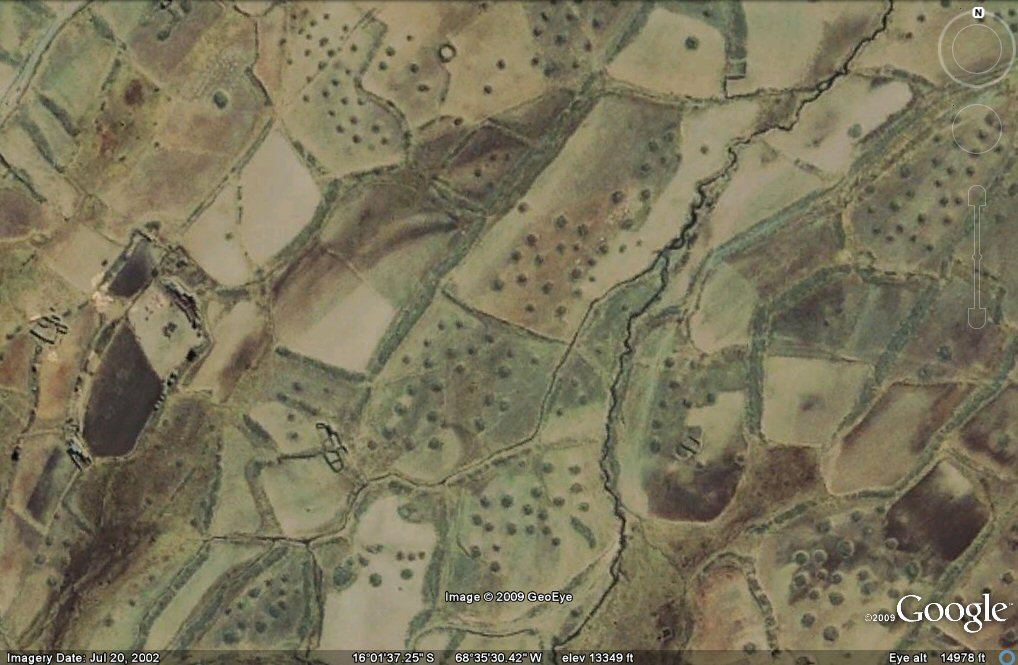
Above, close-up of some irregular field boundaries.
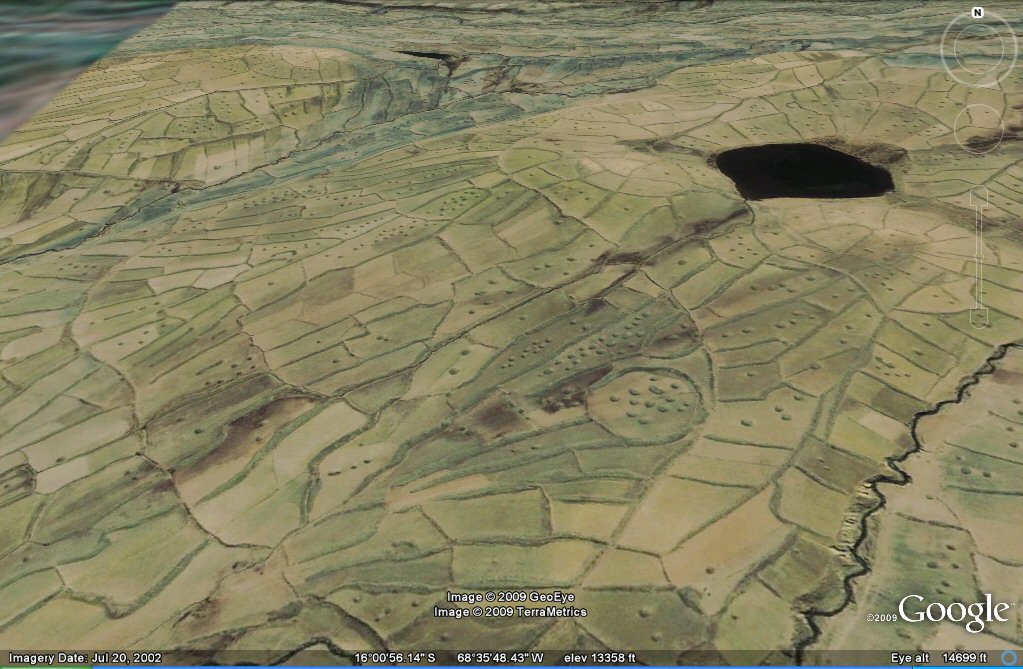
Above, some irregular field boundaries oblique view.
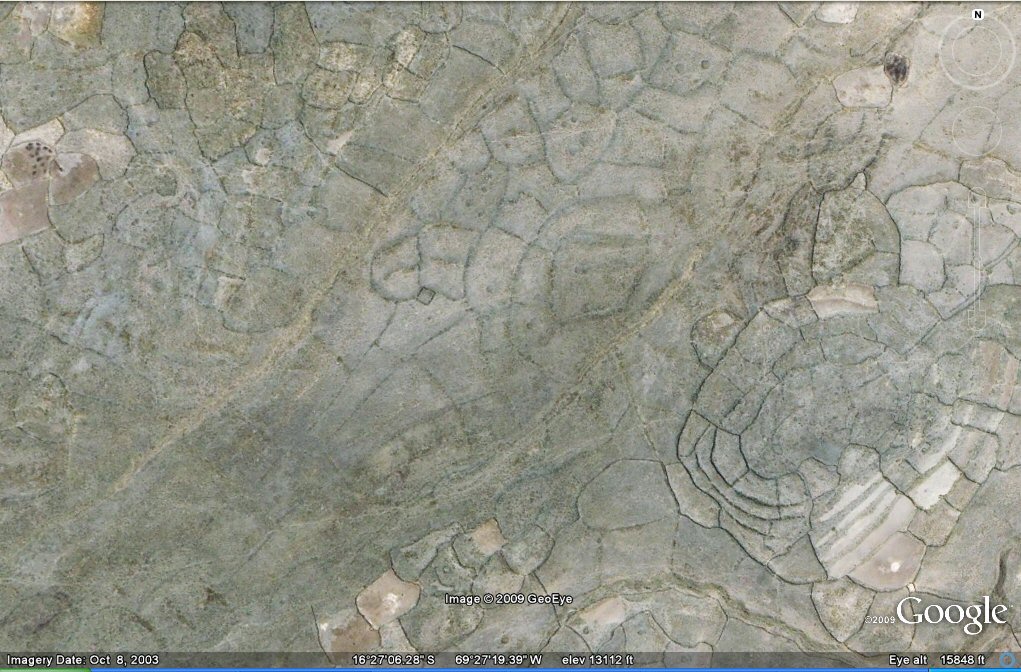
Above, some irregular field boundaries, in the region south-west of Lake Titicaca.
14. artificial ponds with interconnecting water channels.
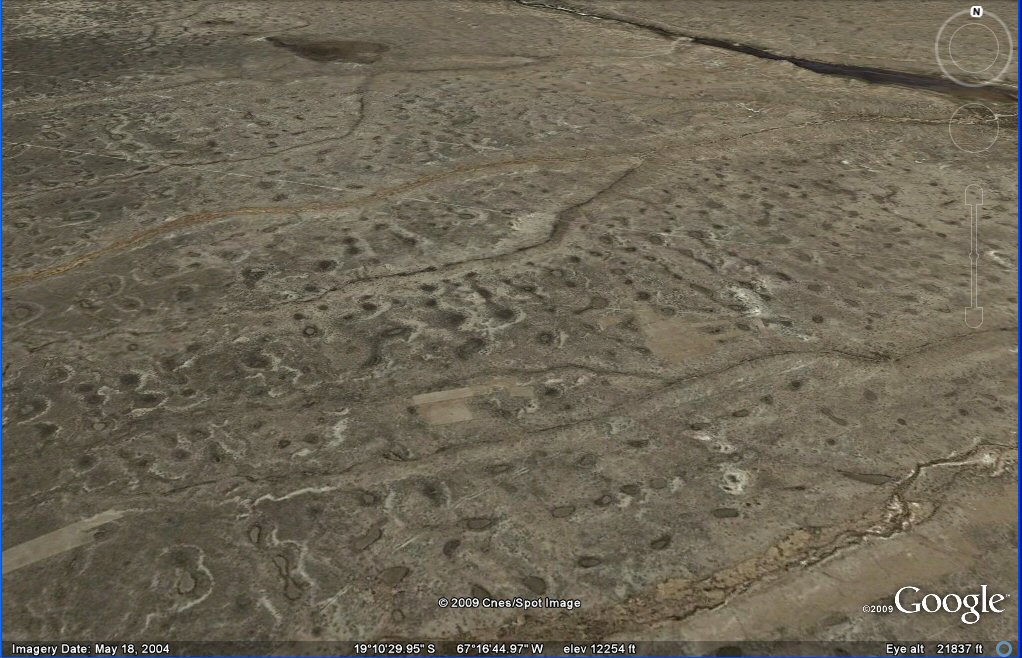
Above, oblique view showing artificial fish ponds with interconnecting channels near
Pampa Aullagas, Lake Poopo.
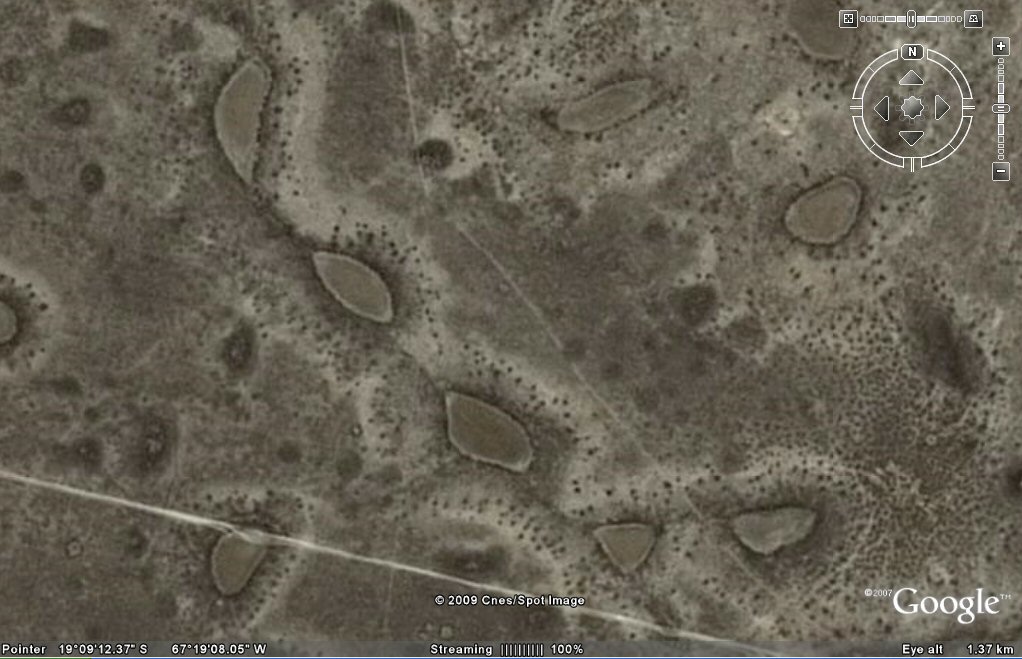
Above, the ponds are interconnected by tiny channels, near Pampa Aullagas, Lake Poopo.
15. canals bringing water to flood salt pans.
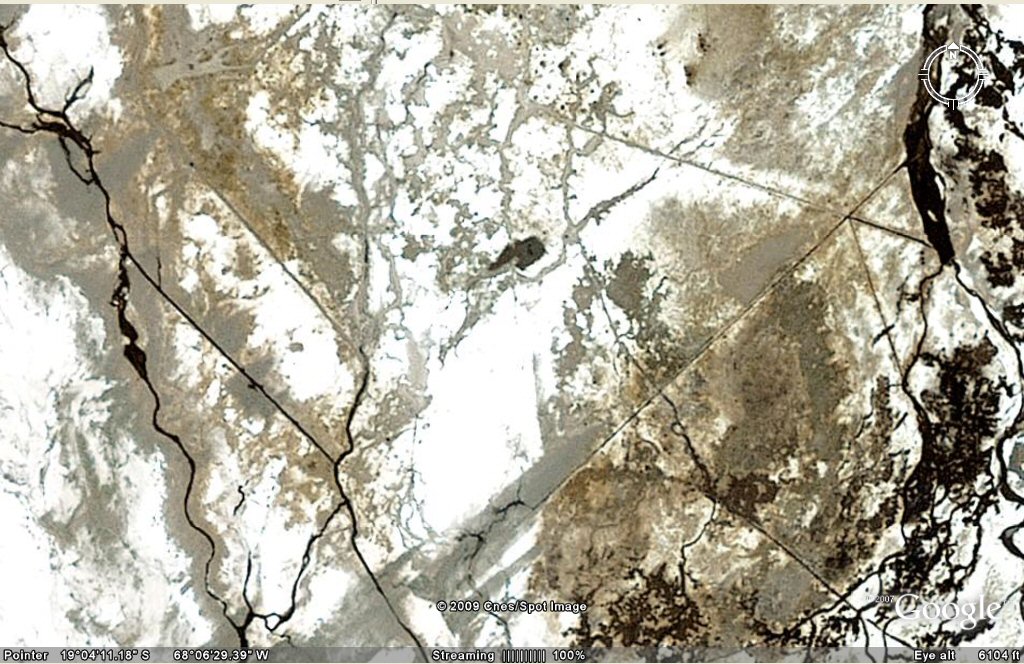
Chipaya region. The salt desert is covered with canals.
16 artificial environment within salt pans flooded areas.
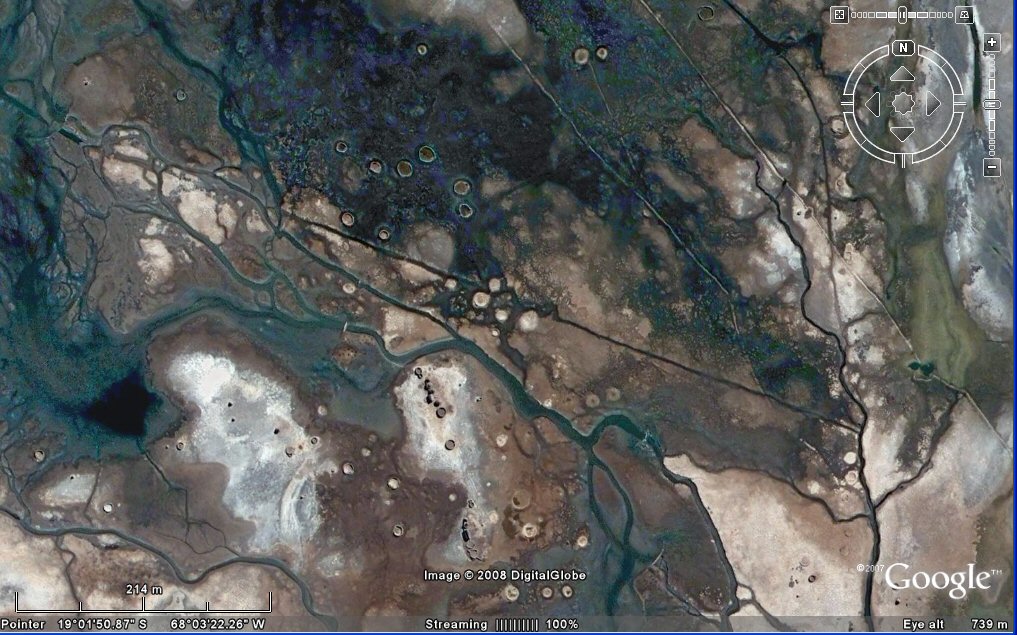
Chipaya region. The small circles are abandoned houses of people who lived in the aquatic environment.
The European system of agriculture is to drain the land and plant crops, but it seems some of the
ancient native Americans lived in
semi-aquatic environments, flooding the land which attracted fish and wildfowl instead of plantng crops.
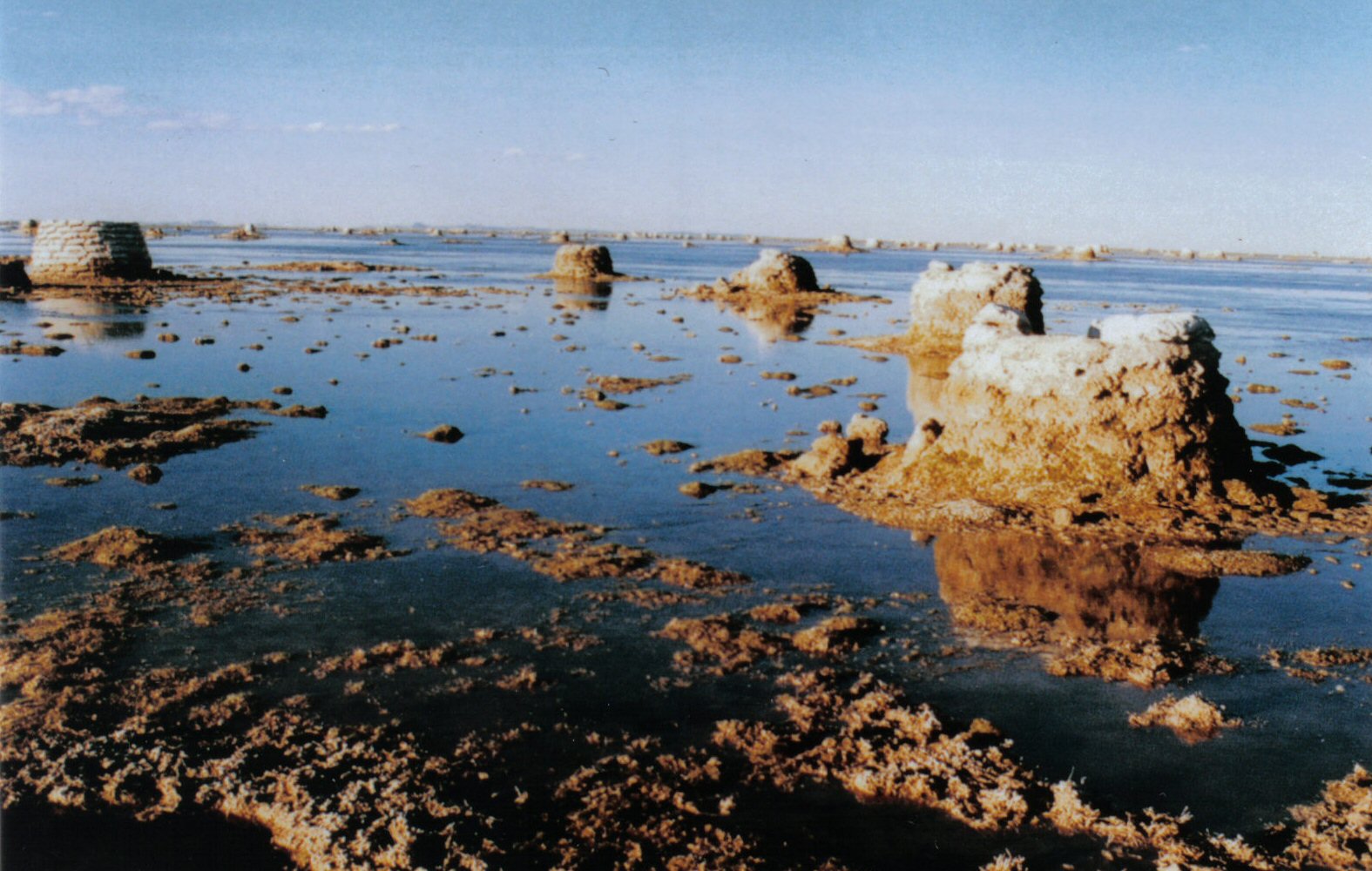

Chipaya region. The aquatic environment.
The Uru/Chipaya live in
semi-aquatic environment, the level plain floods easily.
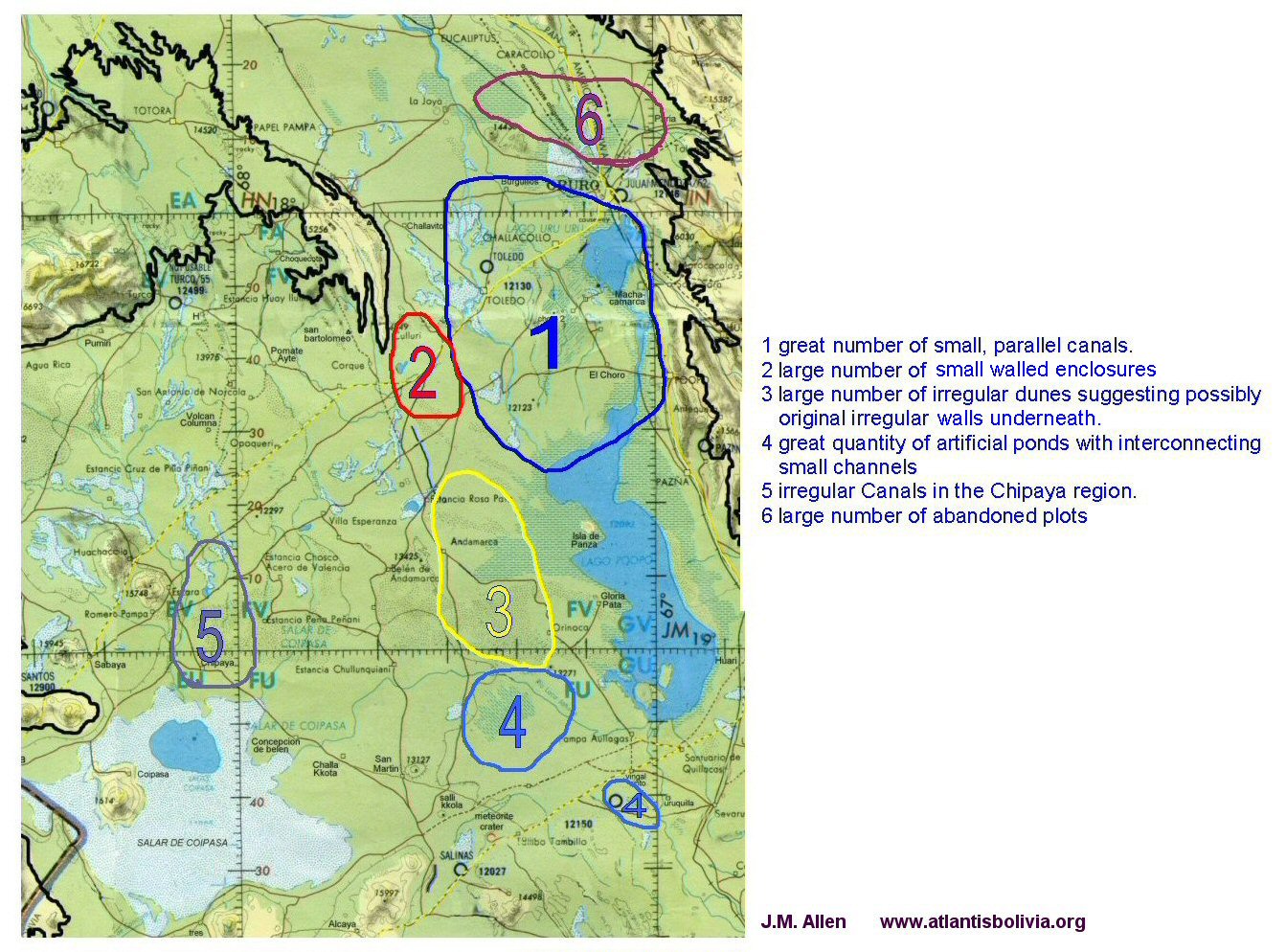
Above, map of the area south of Oruro showing differing agricultural systems in the Oruro zone.
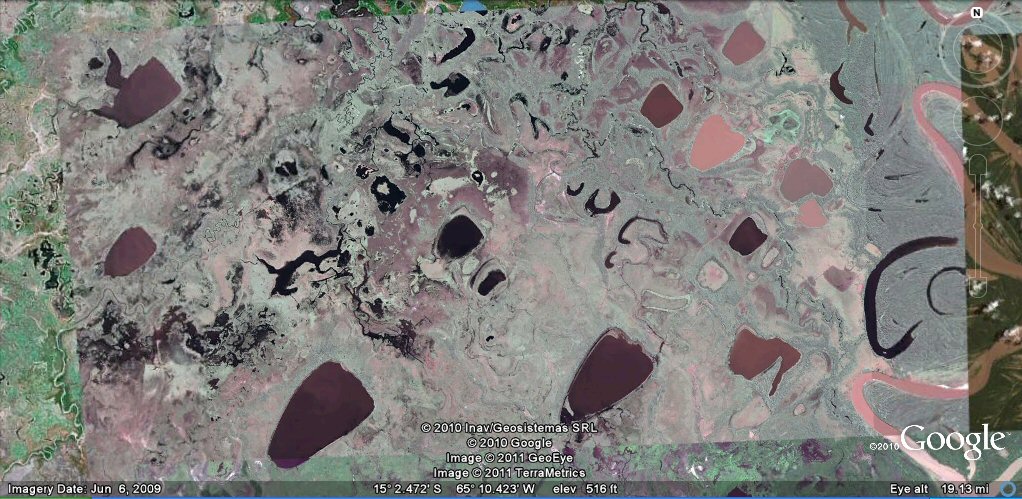
Above, artificial ponds, the lower left pond measures 4000 metres (8000 sumerian cubits or 20 furlongs) in length.
See Beni page for further examples.
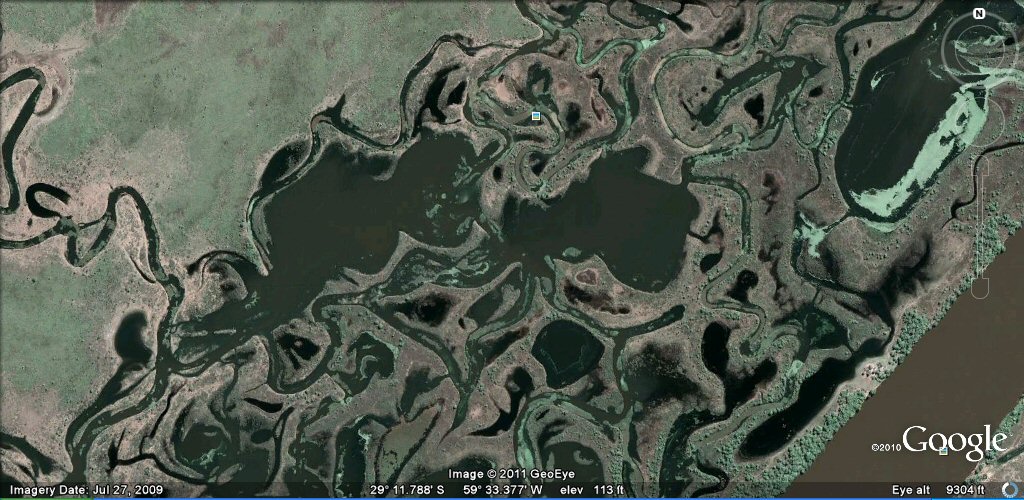
Above, artificial ponds, island and canals,
See rio Parana page for further examples.
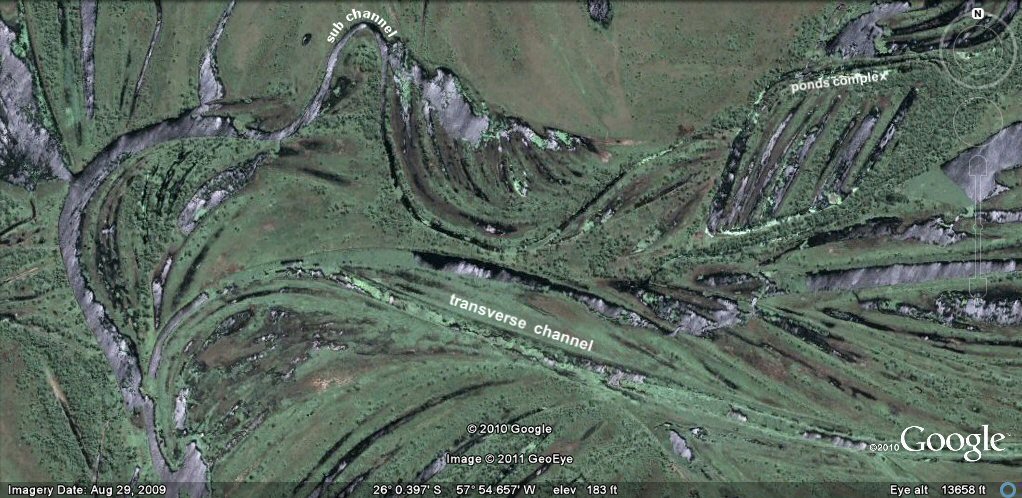
Above, artificial canals feeding complexes of ponds formed from cut off oxbow lakes and channels,
See rio Paraguay page for further examples.
geoforms - geoglyphs and other agricultural landforms
ringed hilltops
earthquakes
contour forms/irrigation Peru
contourforms/irigation Bolivia
Bombo earthquake route
Bombo route oblique views
Paria, Oruro containment canals
canal to sea (lago UruUru)
Tabasco, Mexico canals gallery
Pantanal
Beni, Moxos gallery
rio Paraguay levees canals
rio Parana canals, ponds and islands
rio Parana delta canals
Corrientes
rio Amazon to Manaus
rio Amazon west from Manaus
rio Orinocco to Amazon canal
flooding dates on the Altiplano
Atlantis stones gallery
Teotihuacan measuring unit
Teotihuacan citadel measuring units
Chichen Itza and El Castillo measuring units
Monte Alban, measuring units
the Tiwanaku soli-lunar calendar
the Muisca calendar
Lost Calendar of the Andes
Decoding the quipu mathematics
J.M.Allen 5th Dec 2010
webatlantis@hotmail.com
 Variety of agricultural formations on the Bolivian Altiplano
Variety of agricultural formations on the Bolivian Altiplano
